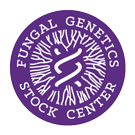Strain: Neurospora crassa
FGSC #3004
Reporting Genes: suc
Species: crassa
Allele: KG163
Alternate Strain Number: 163-1A
Mutagen: NG
Depositor: HK
Linkage Group: IL
Mating Type: A
Genetic Background: M
ref1: Kuwana & Imaeda 1976 Jap. J. Genet. 51:337-345, https://doi.org/10.1266/jjg.51.337
Genes
